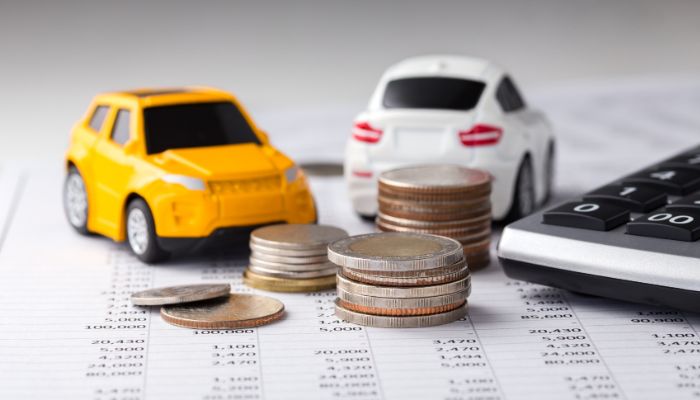How Do I Leasing a Car With Fair Credit?
Leasing a car with fair credit allows you to enjoy brand-new vehicle models at reasonable prices. Unlike bad-credit leasing, which involves large down payments and substantial monthly payments, a fair-credit rating is cheaper. Having fair credit means you are a responsible borrower who is unlikely to default on the lease payments. Therefore, the leasing company is more likely to approve you for a lease.
On average, a credit rating between 661 and 780 is considered fair by lenders of all kinds, including car leasing companies. Anything below that is subprime and will attract high-interest rates. While you can lease a car with bad credit, having good credit gives you many advantages, including paying fair rates. This article discusses the process involved in identifying and signing a lease agreement when you have proper credit. Keep reading for more information.
What Is a Car Lease?
A car lease is an arrangement in which an individual or organization uses a car while making monthly payments for a given period. During that time, the lessee pays the lessor to use the vehicle. A lease is premised on the vehicle’s expected depreciation for the duration of the lease. Therefore, a lessee does not pay for the vehicle’s total value but the predicted depreciation.
Say someone wants to lease a brand-new car worth $25,000. The vehicle is projected to depreciate by 40 percent in three years after a 36,000 mileage. That means that the vehicle’s depreciation value is $10,000. If you lease the car for 36 months, you will pay the $10,000 lost value plus interest, taxes, and fees.
At the end of the lease, you are expected to return the vehicle in good shape. If the car is visibly damaged, the leasing company will charge you for it. Besides, if you exceed the set mileage (36 months in the example above, you will also pay for it.
How to Get the Best Terms When Leasing a Car with Fair Credit?
Did you know that leasing a car with fair credit doesn’t always result in affordable payments? If you aren’t careful, the leasing company can take advantage of your ignorance to put you on expensive terms. The following are some of the steps you can take to get the best lease terms:
Step 1: Research Acceptable Credit Limits and Car-Leasing Terminology
The first step in leasing a car is checking your credit limit. That’s because you need a fair credit to lease a brand-new vehicle, which is the one for which you’re looking. With most leasing companies demanding a credit rating of 700, you will want to ensure you fall anywhere close to that. Once you are sure about your credit rating, learn the meaning of the standard terms in car leasing, including the following:
- Lessor/Lessee: The lessor is the leasing company, usually a car manufacturer or dealership. The lessee is you or the person leasing the vehicle.
- Co-Signer: The co-signer is the person acting as a guarantor of the lease to help you qualify for the lease (due to their excellent credit rating) or get better lease terms.
- MSRP: refers to the manufacturer’s suggested retail price, which is usually non-negotiable if you purchase the car in cash.
- Money Factor: It is a representation of the expected interest rate on the borrowed money. Manufacturers usually set the money factor, but some dealers may increase it, denying you the base rate.
- Capitalized Cost (Sale Price): This refers to the lease price of the car. Be sure to engage the dealer in rigorous negotiations on this.
- Residual Value: The price the manufacturer is willing to pay to buy the car from the dealership at the end of the lease. You can also purchase the vehicle at the same price if you wish. Since the manufacturer sets this price, always check that the dealership is using the correct residual value.
Step 2: Choose an Appropriate Car Make and Model
Before leasing a car, you have to be clear in your mind the kind of make and model you want. Once you know the vehicle you want, you should figure out your desired annual mileage and the lease period. With that, it will be easier for you to approach the car leasing company and start negotiating for a fair price.
If you are not sure about the car make and model, be sure to research the internet for the best deals at any given time. You can pick out a few sales before approaching the leasing company for negotiations. It is possible to avoid mileage charges by overestimating your expected annual mileage. That way, you will get a car that’s within your desired range.
Step 3: Test-Drive the Vehicle at Your Local Dealership’s Premises
If there is a local car dealership near you, visit their premises to test-drive your favorite vehicle. That will help you assess the appropriateness of the vehicle for your needs. This step overlooks the details of the package. Its purpose is to give you a feel of the vehicle’s make and model. If there is no local dealer near you, then you can skip this step.
Step 4: Research the Latest Vehicle’s in Your Make and Model
By now, you have picked a particular car make and model. Find out from other car dealerships if they have the exact vehicle. If they do, research details like the color, interior, packages, and options you want. Ask the dealer for a quotation of the total lease charges, monthly after-tax, the MSRP, and capitalized cost (residual value, money factor, and acquisition fees). When asking for the quote, insist that you only intend to pay the registration fee (down payment) and the first monthly payment. You can use the new quotations with the dealership that granted you a test drive.
Whatever you do, don’t commit your money as part of the capitalized cost reduction (down payment). Most car dealerships require large down payments to reduce the monthly payments. However, it only serves the dealership’s interests. If someone steals the car a day after signing the lease agreement, you won’t get a down payment refund. However, you can risk it if you believe it will help you get fairer monthly payments.
Step 5: Lease Offer Comparison
When comparing lease offers, focus on the monthly payments and any other details. For example, you may want to know how much discount the dealers offer on MSRP vs. capitalized cost. While some dealers offer higher discounts, they make up for it with a higher money factor. Also, check if all dealers have the same residual value. Be conscious of dealers who quote a larger down payment than the registration fee plus the first payment.
Step 6: Negotiate the Lease Deal
At this stage, you should confirm the prevailing manufacturer’s residual value and money factor for your car’s make and model. Manufacturers often set different numbers monthly. Pick two dealers with the most competitive rates, especially those who listened to you and quoted the base money factor. Email the two dealers and ask if they can go lower than that—request a 20 percent reduction of the quoted monthly payment. When leasing a car with fair credit, you can quickly get the deal for which you negotiate.
Step 7: Select the Best Terms of Lease
Once you have gotten the lowest possible quote from an alternative dealer over the internet, call your local dealer and ask if they can beat the deal. If your local dealer offers you anything below the alternative dealership, go back to the alternative dealership for a better deal. Once any of the car dealerships refuse to improve on the sale, pick the lowest possible option. After too much haggling, it’s unlikely for any of them to go any lower than that.
Step 8: Finalize the Lease
Test drive the car you have settled on, ensuring it feels just right. Confirm the minutest details of the deal. After that, you can authorize a credit inquiry. The dealership might require you to prove that you have insurance before allowing you to drive away with the car. If it’s your first car, ask the dealer for recommendations or get a quote online. You might want to choose an insurance company that only charges you for the clocked mileage.
Now you can sign the lease documents in the presence of your finance officer. The finance offers may want you to sign up for the company’s protection and maintenance programs, which come at an extra cost. Unless you’re willing to part with more money, decline the offer. With that, you can be sure of having a leased car for the duration of the lease.
Mistakes to Avoid When Leasing a Car with Fair Credit
While leasing a car with fair credit can result in reduced monthly payments, it can also be too costly if you aren’t careful. Here are five mistakes to avoid when leasing a vehicle:
1. Making Excess Down Payment
Most of the car dealerships with reduced monthly payments often demand hefty down payments. The purpose of the down payment is to cover part of the lease, which leads to supposedly lower monthly payments.
If for some reason, you lose the car or it gets wrecked within a few months, the dealership will get a reimbursement for the value of the vehicle. However, you won’t get a refund of any down payment you had made. Why would you want to risk getting yourself into that situation?
On average, you shouldn’t spend anything above $2,000 upfront when leasing a car. Even so, you can opt not to make any down payment and convert all the fees into monthly payments. That way, the leasing company won’t remain with a large amount of you when something terrible happens to the vehicle.
2. Avoiding Gap Insurance
Driving a leased car dictates that you buy gap insurance, which covers the difference between what you owe on the lease and the car’s current value. For example, you may sign a contract with a residual value of $15,000 if the vehicle gets destroyed. At the same time, in your hands, the insurance will pay the difference between the current market value and the residual value to the car dealership. Without gap insurance, you might have to pay the difference out of your pocket.
3. Underestimating Your Expected Mileage
Most leasing contracts have mileage limits set at 10,000, 12,000, or 15,000 miles. Exceeding those limits may result in 30 percent additional charges per mile. For example, exceeding the mileage limit by 5,000 miles may result in a $1,500 surcharge. Therefore, it helps if you consider your driving habits before setting an expected mileage limit. Consider the time you take commuting daily and going for long trips. Where you need a higher mileage limit, don’t hesitate to ask for it. Even though it may result in higher monthly payments, it will help you avoid additional charges.
Conclusion
With a fair credit rating, you have a high chance of qualifying for a lease. However, leasing a car with proper credit might not always result in affordable monthly payments. You have to be careful when choosing a vehicle leasing company and to negotiate for a deal. Researching on the available offers can reveal to you the fairest leasing companies. When you find a great deal you can afford, don’t hesitate to sign against the dotted line. Be sure to keep making your monthly payment to the end of the lease. If you wish to purchase the vehicle, ask the leasing company. By that time, you would have tested the car and fallen in love with it.
Frequently Asked Questions (FAQ)
What qualifies me to lease a car?
Many things qualify you to lease a car, including a good credit rating, ability to pay, availability of a co-signor, a driver’s license, and insurance. Make sure all of these things are in order before approaching a leasing company for a deal.
Why is leasing a car a smart move?
Leasing a car is a smart move because you only pay for the vehicle’s expected depreciation over the lease period. Therefore, the resultant payments are way lower than purchasing the car through bank financing.
Do I need good credit to lease a car?
Yes. You need good credit to lease a car, especially if you want a newer, brand-new model. Mostly, a credit rating of about 700 will do.




